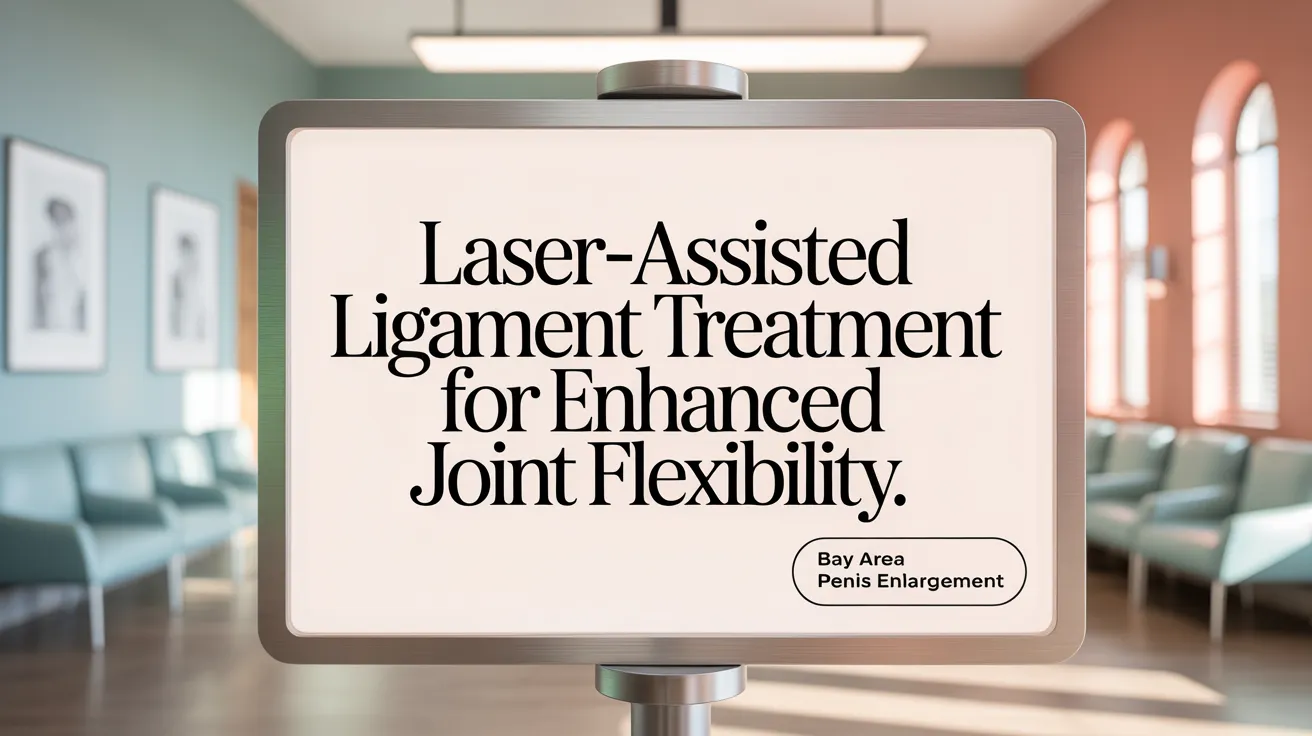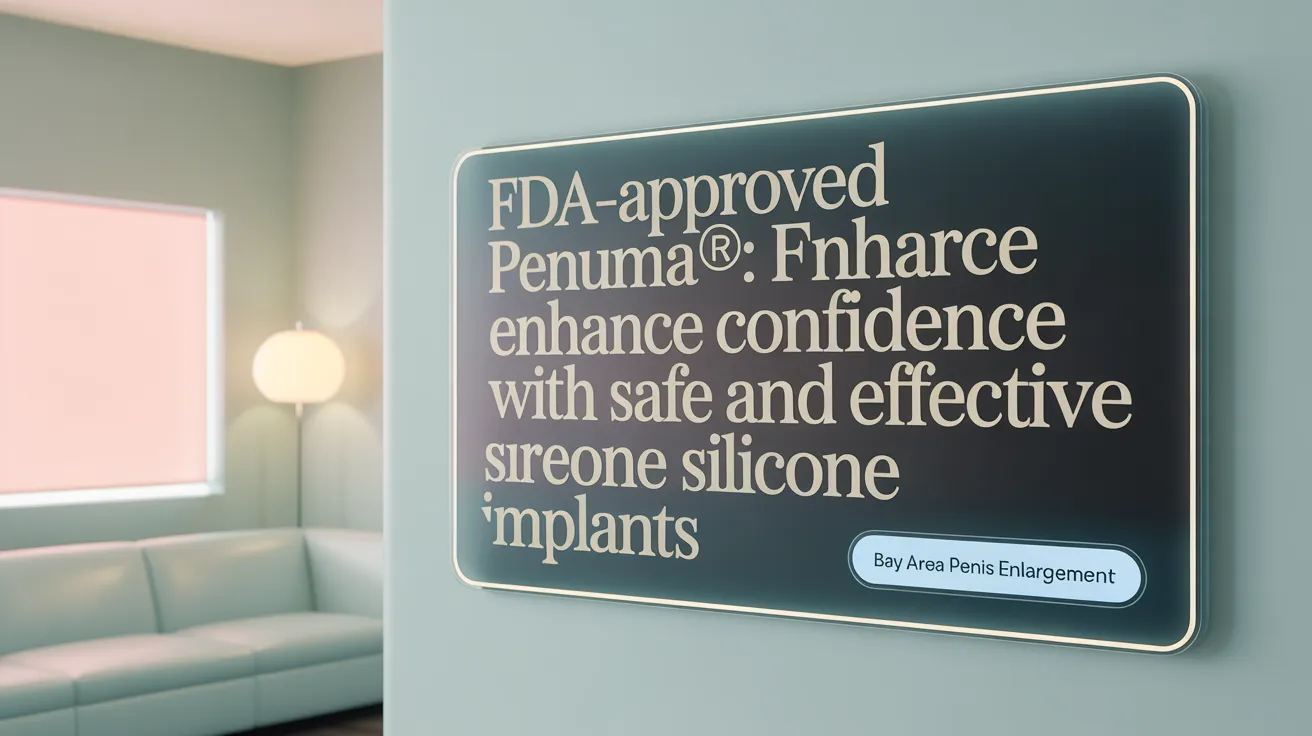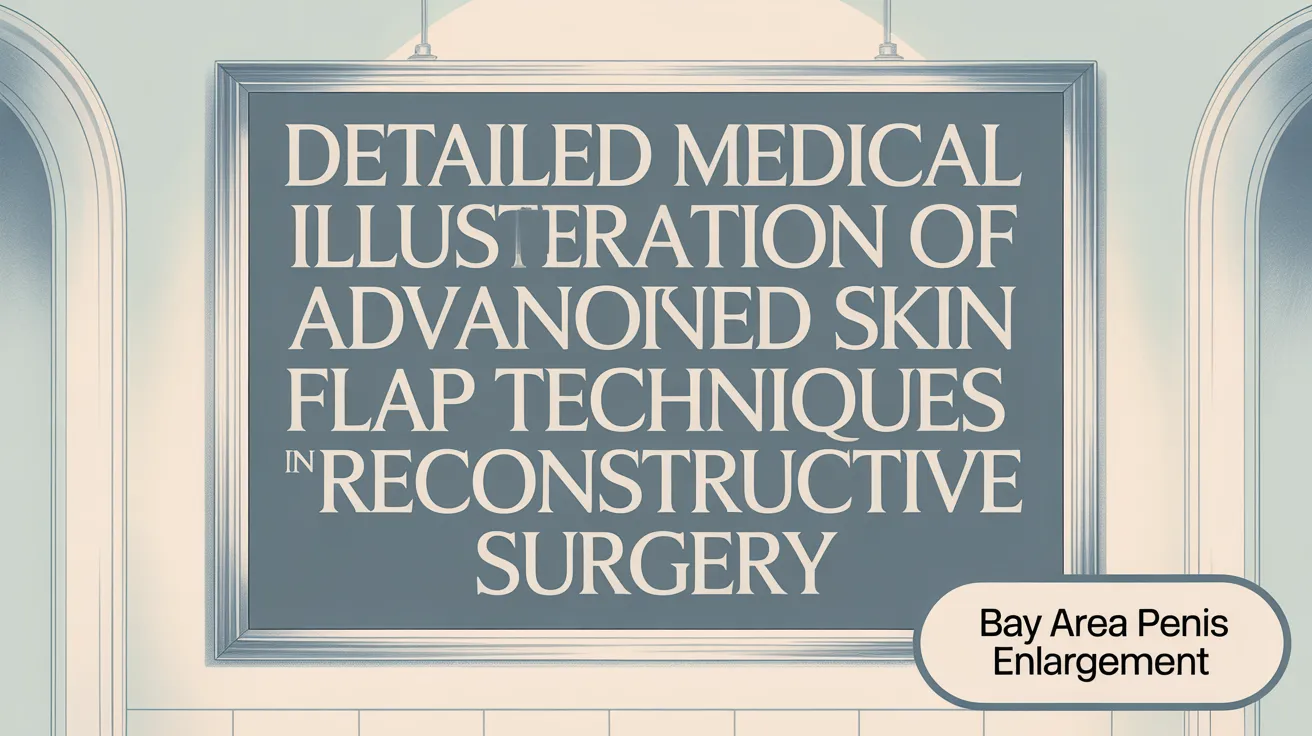Introduction to Game-Changing Penis Enlargement Surgeries
Overview of Surgical Penis Enlargement
Penile enlargement surgeries have evolved significantly, targeting both length and girth enhancement through advanced surgical intervention. Traditional methods such as suspensory ligament release—commonly known as ligamentolysis—enable visible length gain by detaching the penis from the pubic bone. Girth enhancement is frequently achieved via autologous fat injections, dermal grafting, or implantation of specialized devices like the FDA-cleared Penuma® silicone implant. These procedures are carefully tailored based on patient anatomy, ensuring both aesthetic and functional outcomes.
Importance of Innovative Techniques
Recent innovations have improved safety, efficacy, and patient satisfaction. Techniques such as Dr. Valenzuela’s tunica expansion procedure utilize a single scrotal incision with staggered tunica albuginea incisions, reducing operative risk and improving cosmetic results. Utilization of local nerve blocks for postoperative pain management minimizes narcotic use and associated complications. Advances in surgery, including laser-assisted ligamentolysis and tissue-engineered scaffolds, further enhance precision and recovery while expanding the range of customizeable solutions.
Goals of Modern Penile Enhancement
Modern penile enhancement aims not only to increase size but also to optimize appearance, restore function, and improve psychological well-being. The primary objectives include achieving natural-looking length and girth gains, preserving erectile function, minimizing complications such as infection and scarring, and providing durable, patient-satisfying results. Comprehensive preoperative evaluation and realistic expectation management remain critical to success in this sensitive and highly individualized field.
Key Facts on Male Genital Enhancement Treatments
- Ligamentolysis with laser assistance can achieve 2-5 cm length gain with minimal invasiveness and rapid recovery.
- Autologous fat transfer combined with PRP offers natural, durable girth enhancement and promotes tissue regeneration.
- The Penuma® implant is an FDA-approved silicone device providing significant girth and length improvement with high patient satisfaction.
- Dr. Valenzuela’s single scrotal incision technique minimally invasive method reduces scarring and has a low infection risk.
- Dermal fat grafting and acellular dermal matrix provide permanent girth increase, though with some potential for fat resorption.
- Tissue engineering using PLGA scaffolds and autologous fibroblasts shows promising natural tissue regeneration for long-term girth gains.
- Penile prosthesis with adjunct procedures can preserve or slightly increase penile size; includes venous ligation and tunica expansion techniques.
- Advanced skin flap techniques like SCIA and scrotal flaps are used for complex reconstructions needing significant tissue augmentation.
- Minimally invasive methods—fillers, traction devices, PRP—offer quick recovery, less scarring, and natural results.
- Personalized treatment plans improve safety, satisfaction, and outcomes by tailoring interventions to individual anatomy and health conditions.
1. Ligamentolysis With Laser Assistance for Significant Length Gain

What is the scientific basis of ligamentolysis?
Ligamentolysis surgery is a surgical procedure that increases the visible length of the flaccid penis by cutting the suspensory ligament, which normally anchors the penis to the pubic bone. By releasing this ligament, the internal portion of the penis is allowed to project outward more, creating the appearance of increased penile length without changing the actual erect size.
How does the laser ligamentolysis technique work?
Laser ligamentolysis utilizes advanced laser technology to precisely incise the suspensory ligament. This scar-free, minimally invasive method reduces tissue trauma compared to traditional scalpel use. The procedure is performed under general anesthesia and involves a small incision to access and release the ligament, facilitating a length gain.
What length gains and safety outcomes are associated?
Clinical evidence supports that laser ligamentolysis can achieve visible length increases between 2 to 5 centimeters. This range depends on patient anatomy and surgical technique. The method is considered safe with minimal invasiveness and has a low risk profile when done by qualified specialists.
What are the recovery considerations after the procedure?
Postoperative recovery is generally rapid, with many patients returning to normal activities soon after surgery. The procedure avoids external incisions, diminishing scar formation and promoting faster healing. Patients are typically advised to abstain from strenuous physical or sexual activity for several weeks to ensure optimal results and reduce complications. Details on recovery after penis elongation surgery underscore the importance of post-operative care for healing and safe outcomes.
2. Autologous Fat Transfer Enhanced with Platelet-Rich Plasma (PRP) for Natural Girth Augmentation

How is fat harvested and purified for penile girth augmentation?
Autologous fat transfer involves harvesting fat from areas like the abdomen or thighs through liposuction. This fat is then purified to remove impurities before injection. The processed fat is carefully injected into the penile shaft to increase girth, providing a natural and biocompatible volume enhancement (Fat transfer for penile girth enhancement).
What role does PRP play in enhancing fat transfer outcomes?
Platelet-Rich Plasma (PRP) is incorporated into the fat transfer procedure to stimulate tissue regeneration and improve healing. PRP contains growth factors that promote angiogenesis and cellular repair, potentially enhancing fat graft survival and the longevity of penile girth improvement (Penile tissue rejuvenation with PRP.
What is the longevity and safety profile of this technique?
This combined procedure offers durable results that can last for several years. It is minimally invasive with a favorable safety profile, showing minimal complications while improving penile tissue health along with volume. Patients experience natural-feeling girth gains without synthetic implants (Durable penile enhancement results.
What are the minimally invasive benefits of the procedure?
The single-session treatment is performed on an outpatient basis, allowing patients to return home the same day. There is no need for extensive surgery, general anesthesia, or prolonged recovery. This makes it an attractive option for those seeking natural enlargement with minimal downtime and reduced risk of scarring or infection (Minimally invasive penis enlargement.
3. Penuma® Silicone Implant: FDA-Approved Soft Silicone for Durable Girth and Length Enhancement

What is the Penuma® implant and how is it placed?
The Penuma® implant is a specialized, soft silicone device FDA-cleared for cosmetic penile enhancement aimed at increasing both girth and flaccid length. It is placed subcutaneously beneath the penile skin via a minimally invasive surgical approach. Dr. Robert Valenzuela notably uses a unique single 3-centimeter scrotal incision, which avoids the traditional circumcision incision, minimizing visible scarring and reducing complication risks.
What does the surgical procedure involve?
Penuma implantation typically lasts about 45 minutes and can be performed under local sedation or general anesthesia. The technique involves careful mobilization of penile tissues, including the dartos muscle and Buck’s fascia, with strategic placement of the implant over the corpora cavernosa. Patients are usually discharged on the same day as the procedure, with a low infection rate reported at approximately 3-4%.
What are the patient outcomes and satisfaction?
Studies and clinical experience demonstrate high patient satisfaction due to the Penuma implant producing rapid and durable girth increases. Average girth enhancement ranges up to 40-57%, with noticeable improvements in flaccid penile length by up to 2-5 cm. The procedure enhances penile appearance without impairing erectile function, appealing especially to men unhappy with their flaccid state.
What risks and complications should patients consider?
The procedure carries relatively low risks but possible complications include seroma formation, capsular contracture surrounding the implant, infection, and rare cases of implant erosion. The overall complication rate is low, around 4%, and careful patient selection and surgical technique contribute to minimizing adverse events.
In summary, the Penuma® silicone implant offers a well-studied, FDA-approved option for men seeking substantial, lasting penile girth and length enhancement with a favorable safety profile and high satisfaction.
4. Tunica Albuginea Expansion via Single Scrotal Incision: A Less Invasive Approach by Dr. Valenzuela

What is the innovative tunica expansion technique (TEP)?
Dr. Robert Valenzuela developed an innovative method known as the tunica expansion technique (TEP) details, aimed at enhancing both penile girth and length. This technique utilizes a series of small, staggered incisions along the tunica albuginea, facilitating tissue expansion in a controlled, safe manner.
How does the single scrotal incision differ from the traditional circumcision approach?
Unlike conventional methods where incisions are made via circumcision, Dr. Valenzuela’s approach employs a single 3-centimeter incision in the scrotal area. This less invasive pathway minimizes visible scarring and lowers the risk of common complications, while offering improved cosmetic outcomes.
What are the key surgical steps and tissue mobilization involved?
The procedure begins with the 3 cm scrotal incision, followed by careful mobilization of the dartos muscle and Buck's fascia. Small precise incisions are then made along the corpora cavernosa to allow expansion. Throughout, meticulous dissection preserves neurovascular bundles, maintaining erectile function.
What anesthesia protocol and pain management strategies are used?
Dr. Valenzuela employs a local nerve block anesthesia protocol designed to effectively manage postoperative pain without the need for narcotics. This approach reduces systemic side effects and improves patient comfort during recovery.
What are the typical outcomes and infection rates?
The surgery duration typically ranges between two to three hours, with patients discharged the same day. Infection rates reported by Dr. Valenzuela are impressively low, under 1%, a figure notably lower than the national average of 1–5%.
This technique represents a significant advancement in penile enhancement surgery by combining efficacy with safety and enhanced patient satisfaction.
5. Dermal Dermal Fat Grafting and Acellular Dermal Matrix for Penile Girth Enhancement

Graft materials and application
Dermal fat grafting involves harvesting a composite of dermis and fat from the patient, typically from body areas such as the lower abdomen or thigh, which is then transplanted subcutaneously around the penile shaft to increase girth. Acellular dermal matrix (ADM) products, like AlloDerm and BellaDerm, are graft materials derived from processed human tissue that provide a scaffold for tissue integration and can also be implanted around the penis to augment circumference.
Advantages and risks compared to fillers
Compared to injectable fillers such as hyaluronic acid injection for penile girth enhancement or Poly L-lactic acid (PLA) injections, dermal fat grafting offers a more permanent volume increase with natural tissue integration. ADM grafts similarly provide lasting augmentation. However, unlike fillers which are minimally invasive and reversible, graft procedures are surgical, requiring incisions and carry greater procedural risk. They offer natural texture and durability advantages but at the cost of more complex surgical intervention.
Potential complications and management
Complications can include graft resorption leading to volume loss, seroma formation, infection, wound healing issues, and in some cases erectile discomfort. Graft migration or contour irregularities may occur, particularly with ADM products. Close monitoring postoperatively, use of drains when indicated, and antibiotic prophylaxis are critical to minimize risks. Surgical revision may be needed to address complications such as asymmetry or graft failure. Details on complications in penile augmentation surgeries and post-operative care for penis surgery are important for management.
Durability of girth increase
Dermal fat grafting generally results in a significant and lasting increase in penile girth; however, some degree of resorption is expected over time which may reduce initial gains. Studies report variable rates of fat retention but typically maintain clinically satisfactory volume long term. ADM implants also yield permanent girth enhancement, though the erect state girth increase may not be identical to the flaccid state, necessitating patient counseling. Both techniques, when performed by experienced surgeons, achieve durable aesthetic and functional outcomes as described in comprehensive penile enhancement reviews.
6. Tissue Engineering with Biodegradable Scaffolds and Autologous Fibroblasts for Next-Gen Girth Increase

What is tissue engineering in penile augmentation?
Tissue engineering for penile augmentation involves creating new tissue by combining biodegradable scaffolds with a patient's own cells. This regenerative approach aims to safely increase penile girth by promoting natural tissue growth rather than relying solely on synthetic implants or fillers.
How are biodegradable PLGA scaffolds used?
Polylactic-co-glycolic acid (PLGA) scaffolds serve as a temporary framework implanted under the penile skin. These scaffolds provide structural support and gradually degrade as new tissue forms around them. Their biodegradability minimizes long-term foreign material presence, reducing the risk of complications.
What cellular techniques are involved?
Autologous fibroblasts harvested from the patient are cultured and seeded onto the biodegradable scaffold before implantation. These fibroblasts stimulate collagen production and new extracellular matrix formation, encouraging sustainable girth enhancement.
What do early results and safety studies show?
Initial clinical studies report significant and stable increases in penile girth from 2 to 3 centimeters using PLGA scaffolds with autologous fibroblast implantation. Safety profiles are favorable, with few adverse effects and manageable recovery. This emerging technique offers a promising alternative to traditional fillers or implants, focusing on natural tissue regeneration for lasting outcomes.
7. Penile Prosthesis Implantation with Adjunct Procedures to Enhance Size and Function

Types of penile prostheses
Penile prostheses are primarily used to restore erectile function in men with erectile dysfunction unresponsive to medical treatments. The two main types are inflatable penile implants and non-inflatable (malleable or bendable) silicone rods. Inflatable implants include multicomponent systems—such as the 3-piece inflatable penile prosthesis—with cylinders, a fluid reservoir, and a pump, which provide rigidity on demand and concealability when deflated. Non-inflatable implants consist of silicone rods that can be manually positioned for intercourse or concealment.
Potential for size preservation or slight increase
While penile implants aim to restore the ability to achieve an erection, they generally do not increase penis size beyond the patient’s natural baseline and may occasionally result in a slightly shorter perceived length. However, some modern implant cylinders are designed to gradually increase girth and stiffness with use. In some cases, implantation preserves the penile dimensions, especially in patients with Peyronie’s disease or severe erectile dysfunction where tissue fibrosis has caused shrinkage. These outcomes and the safety profile are discussed in sources related to penile prosthesis implantation and advancements in penile prostheses.
Adjunct techniques such as venous ligation
Additional surgical techniques may be combined with prosthesis implantation to enhance penile dimensions. Venous ligation procedures aim to reduce venous outflow, improving the rigidity and potentially increasing girth by maintaining tumescence longer. Such adjunct procedures can also help optimize cosmetic and functional outcomes. In select cases, tissue grafting or tunica expansion technique (TEP) details may be utilized concurrently to enhance girth or length.
Considerations for erectile dysfunction patients
Candidates for penile prosthesis implantation generally have moderate to severe erectile dysfunction non-responsive to pharmacotherapy or other less invasive treatments. The procedures require careful preoperative evaluation to assess patient suitability and manage expectations. Recovery typically involves a period of healing and device familiarization before resumption of sexual activity. Risks include infection, mechanical failure, device erosion, and changes in penile sensation or appearance. Overall, patient satisfaction rates exceed 90% when candidacy, technique, and postoperative care are optimized, as discussed in clinical reviews on penile implant surgery and penile enhancement procedures.
8. Advanced Skin Flap Techniques for Complex Penile Length and Girth Reconstruction

What are skin flap options used in penile reconstruction?
Skin flap techniques for penile enlargement predominantly include the superficial circumflex iliac artery (SCIA) flap and the scrotal flap. These flaps involve harvesting local tissue with its blood supply to augment penile length and girth.
- Superficial Circumflex Iliac Artery Flap: This flap utilizes skin and subcutaneous tissue supplied by the superficial circumflex iliac artery, allowing for a substantial increase in penile dimensions with reliable vascularization.
- Scrotal Flap: This option uses scrotal skin, which is naturally elastic and well vascularized, making it suitable for penile shaft coverage and girth enhancement.
When are skin flaps indicated and how complex are these surgeries?
Skin flap techniques are reserved for cases requiring significant reconstruction, such as:
- Congenital anomalies
- Post-traumatic penile defects
- Penile shortening after prior surgeries or disease
These procedures are surgically complex, often requiring microsurgical expertise for vascular anastomosis and precise tissue handling. Operative time is longer compared to simpler augmentation methods and may involve hospital stays beyond same-day discharge. For information on clinic standards for penis surgery and surgical precision and care standards, see.
How do outcomes and patient satisfaction compare?
Skin flap reconstruction generally yields durable increases in both length and girth, with reports indicating generally high patient satisfaction in complex cases. Advantages include:
- Restoration of penile skin coverage
- Avoidance of synthetic materials
- Good tissue integration
However, risks include wound complications, scarring, and potential sensory changes. Careful patient selection and counseling are critical. More on penile enhancement modalities and psychological factors can be found in the literature.
What is the role of skin flap techniques in reconstructive penile surgery?
These techniques are essential in complex reconstructive scenarios where other augmentation methods are inadequate. They provide:
- Reliable tissue for coverage and volume
- Restoration of penile aesthetics and function
- A reconstructive option when prior surgeries or conditions preclude simpler interventions
Advanced skin flap surgery remains a key component in the armamentarium for challenging penile reconstruction requiring substantial tissue augmentation, as detailed in comprehensive surgical penile augmentation reviews.
Comprehensive Overview of Medical Treatments for Male Genital Enhancement

What are the available medical treatments for male genital enhancement?
Medical treatments for male genital enhancement include a variety of surgical penis lengthening and non-surgical options tailored to address length and girth concerns.
Surgical methods for lengthening typically involve ligamentolysis procedure, where the suspensory ligament attaching the penis to the pubic bone is cut, allowing more of the internal penis to extend outward, resulting in an average visible increase of 2–5 cm. For girth enhancement, autologous fat injections, dermal fillers like Hyaluronic acid injection for penile girth enhancement, and human acellular dermal matrix (HADM) use grafts are employed. Autologous fat injections provide natural and lasting girth augmentation, while fillers offer minimally invasive and often reversible volume increases.
The Penuma® implant, an FDA-cleared soft silicone device, offers a permanent surgical option for both girth and flaccid length improvement. This implant is placed subcutaneously and has shown high patient satisfaction with a low complication rate.
Non-surgical options such as vacuum erection devices and penile traction therapy provide modest length increases and psychological benefits but generally do not result in permanent anatomical changes.
Role of FDA-approved devices like Penuma®
The Penuma® implant is unique as the only FDA-approved silicone-based penile enhancement device. It is designed for men with normal erectile function who desire cosmetic enlargement of girth and length in the flaccid state. The procedure takes about 45 minutes, can be done under local or general anesthesia, and allows same-day discharge. Results include significant girth increases and flaccid length gains, with complication rates around 3–4%, primarily involving mild infections or capsular contracture.
Importance of patient counseling and realistic expectations
Given the variety and complexity of treatments, patient education and counseling are critical. Many enhancement procedures serve cosmetic purposes rather than addressing medical necessity, and outcomes vary widely. Patients must understand potential risks such as infection, scarring, altered sensation, and unsatisfactory results. Surgeons typically recommend these interventions for men with clinical indications such as micropenis or buried penis, while advising caution for those pursuing surgery solely for aesthetic concerns. Mental health evaluation is beneficial in cases of body dysmorphic disorder evaluation.
Safety and complication management
Safety protocols include thorough preoperative assessment and selection of qualified specialists experienced with penile procedures. Innovations such as local nerve block anesthetic protocols reduce postoperative pain without narcotics. Infection rates in experienced centers are reported to be under 1% for specialized surgeries like the tunica expansion technique (TEP) and Penuma implantation. However, potential complications include seroma, implant migration, fibrosis, and erectile dysfunction, emphasizing the need for meticulous surgical technique and close postoperative monitoring.
This comprehensive landscape of treatments highlights evolving recent advances in penile enlargement techniques and devices aimed at improving efficacy and safety while setting realistic patient expectations to enhance satisfaction and outcomes.
Dr. Victor Liu’s Expertise Shaping Male Sexual Health Procedures

What expertise does Dr. Victor Liu bring to male sexual health procedures?
Dr. Victor Liu is a double-board certified plastic surgeon with over 30 years of dedicated experience in male sexual health procedures. Since beginning his career in 1984, he has developed a profound expertise in both minimally invasive and surgical techniques designed to enhance male genital aesthetics and function, including minimally invasive penis procedures and penile enhancement techniques.
He is a Fellow of the American College of Surgeons and a member of the American Society of Plastic and Reconstructive Surgeons, credentials that signify his commitment to the highest standards of surgical excellence and safety as outlined in clinic standards for penis surgery.
Dr. Liu has pioneered innovative procedures in penile enhancement, including advanced surgical methods such as the Tunica Expansion Technique (TEP) details, and non-surgical treatments addressing erectile dysfunction, for example, the use of vacuum erection devices and penile traction therapy. His focus on combining aesthetic goals with functional outcomes distinguishes his approach in the field.
Additionally, Dr. Liu plays a significant role in educating and training fellow surgeons, fostering advancements in surgical methods and technology to improve patient care. His expertise has been internationally recognized, with appearances in media and television, underscoring his reputation as a leading authority in male sexual health enhancement.
Advantages of Minimally Invasive Treatment Options for Male Genital Enhancement

What are the advantages of minimally invasive treatment options for male genital enhancement?
Minimally invasive treatments for male genital enhancement offer several key benefits. These approaches use small incisions or entirely non-surgical methods, which typically result in reduced recovery times and minimal visible scarring. Patients experience less postoperative discomfort and a quicker return to normal activities compared to traditional surgical procedures.
The risks associated with anesthesia and complications such as infection and tissue damage are significantly lower with these techniques, improving overall safety. Despite being less invasive, these methods can produce effective, natural-looking outcomes, enhancing penile girth or length in a subtle and cosmetically appealing manner.
Reduced recovery times and scarring
Minor incisions or injection-based procedures cause less trauma, enabling patients to resume daily life and sexual activity sooner. They also minimize scarring, preserving the penis's aesthetic appearance and reducing psychological concerns associated with visible surgical marks.
Lower anesthesia and complication risks
Many minimally invasive procedures can be performed under local anesthesia or sedation, avoiding the risks of general anesthesia. The reduced tissue disruption lowers the chance of complications like infection, hematoma, or nerve injury.
Effective natural-looking results
Advanced fillers such as hyaluronic acid injection for penile girth enhancement, polylactic acid (PLA) injections, and autologous fat transfer with PRP increase girth with results that integrate well with natural tissue. Techniques like penile traction therapy offer length gains while maintaining function and appearance.
Examples of advanced minimally invasive techniques
- Hyaluronic acid injections: Increase penile girth with low complication rates and immediate results.
- Polylactic acid (PLA) fillers: Stimulate collagen formation, sustaining girth enhancement for up to 18 months.
- Autologous fat transfer with PRP: Provides natural, long-lasting volumization and tissue regeneration.
- Penile traction therapy: Mechanical devices that safely increase length over time with high patient satisfaction.
- Botulinum toxin (Botox) injections: Non-surgical relaxation of suspensory ligaments for flaccid length improvement.
These treatments exemplify how modern, minimally invasive strategies can balance efficacy, safety, and patient comfort, offering valuable options for men seeking discreet, effective genital enhancement.
How Personalized Treatment Enhances Outcomes in Male Sexual Health

How does personalized treatment improve outcomes in male sexual health procedures?
Personalized treatment plays a crucial role in optimizing outcomes in male sexual health by customizing care to each patient's specific anatomical and health needs. By considering factors such as penile structure, underlying medical conditions, and individual lifestyle, treatments are tailored to maximize safety, effectiveness, and satisfaction.
Such customization allows for targeted interventions, whether surgical options like Penuma® implants or non-surgical approaches including injection fillers, traction therapy, and vacuum erection devices, addressing the unique challenges faced by each patient. Additionally, integrating lifestyle modifications and psychological support into treatment plans helps tackle root causes such as obesity or performance anxiety, enabling more meaningful and sustained improvements.
Personalized care also significantly reduces the risk of adverse effects by carefully selecting procedures and medications to avoid interactions and complications, thus enhancing patient safety. This approach fosters strong patient adherence by aligning interventions with patient expectations and comfort, leading to higher rates of satisfaction and enduring benefits in sexual health and quality of life.
Ensuring Safety in Male Genital Enhancement Procedures

What considerations ensure safety in male genital enhancement procedures?
Safety in male genital enhancement begins with a comprehensive preoperative health assessment to identify any conditions that might elevate surgical risks. Patients undergo evaluations that screen for factors such as cardiovascular health, diabetes, or clotting disorders to ensure they are suitable candidates.
Minimally invasive techniques are preferred to reduce the risk of complications. Treatments like autologous fat injections and FDA-approved devices such as the Penuma® silicone implant have demonstrated favorable safety profiles and high patient satisfaction when performed correctly. Advances in tissue engineering using biodegradable scaffolds also show promise with fewer adverse effects.
Strict adherence to sterile protocols and the use of cutting-edge surgical technologies, including laser ligamentolysis and precision instrumentation, decrease infection and scarring risks. Innovations in anesthesia, such as localized nerve blocks, limit postoperative pain and reduce reliance on narcotics.
Postoperative care is vital for successful outcomes; routine monitoring helps detect issues early, manage swelling, and facilitates proper healing. Recovery protocols typically recommend avoiding strenuous activity and sexual intercourse until fully healed.
Ultimately, the experience and skill of the surgeon significantly impact safety. Choosing a board-certified professional like Dr. Victor Liu—who integrates evidence-based practices and personalized treatment plans—helps ensure that patients receive care optimized for efficacy and minimal complications.
The Future of Male Genital Enhancement: Safer, Smarter, and More Effective Surgeries
Cutting-Edge Techniques Transforming Penile Enhancement
Modern penile enhancement embraces an array of advanced surgical and non-surgical methods. Innovations include the Tunica Expansion Technique (TEP), involving precise, small incisions to increase penile girth and length with minimal invasiveness. Devices like the FDA-approved Penuma® silicone implant enable significant, durable girth and length gains with a low complication profile. Fat transfer combined with platelet-rich plasma (PRP) is another promising natural approach, enhancing tissue health and aesthetics. Laser Ligamentolysis offers scar-free penile lengthening by releasing the suspensory ligament, while tissue engineering using biodegradable scaffolds introduces novel regeneration capabilities.
Expert-led Personalized Care is Crucial
The success and safety of penile enhancement procedures depend heavily on expert evaluation and individualized treatment planning. Procedures are tailored to patient anatomy, goals, and psychological readiness, ensuring realistic expectations and minimizing risks such as infection, deformity, or erectile dysfunction. Incorporation of novel anesthesia protocols and minimally invasive access, like Dr. Valenzuela's scrotal incision technique, further improve safety and patient comfort.
Ongoing Advancements Fuel Optimism
Research continues to refine implant materials, surgical techniques, and regenerative therapies, reducing complications and enhancing functional and cosmetic outcomes. Customizable devices, improved mechanized prostheses, and regenerative medicine approaches like stem cell therapy signify a future where penile enhancement is safer, more effective, and tailored precisely to patient needs. This progress offers renewed hope to men seeking restored confidence and improved sexual health through personalized, cutting-edge solutions.

